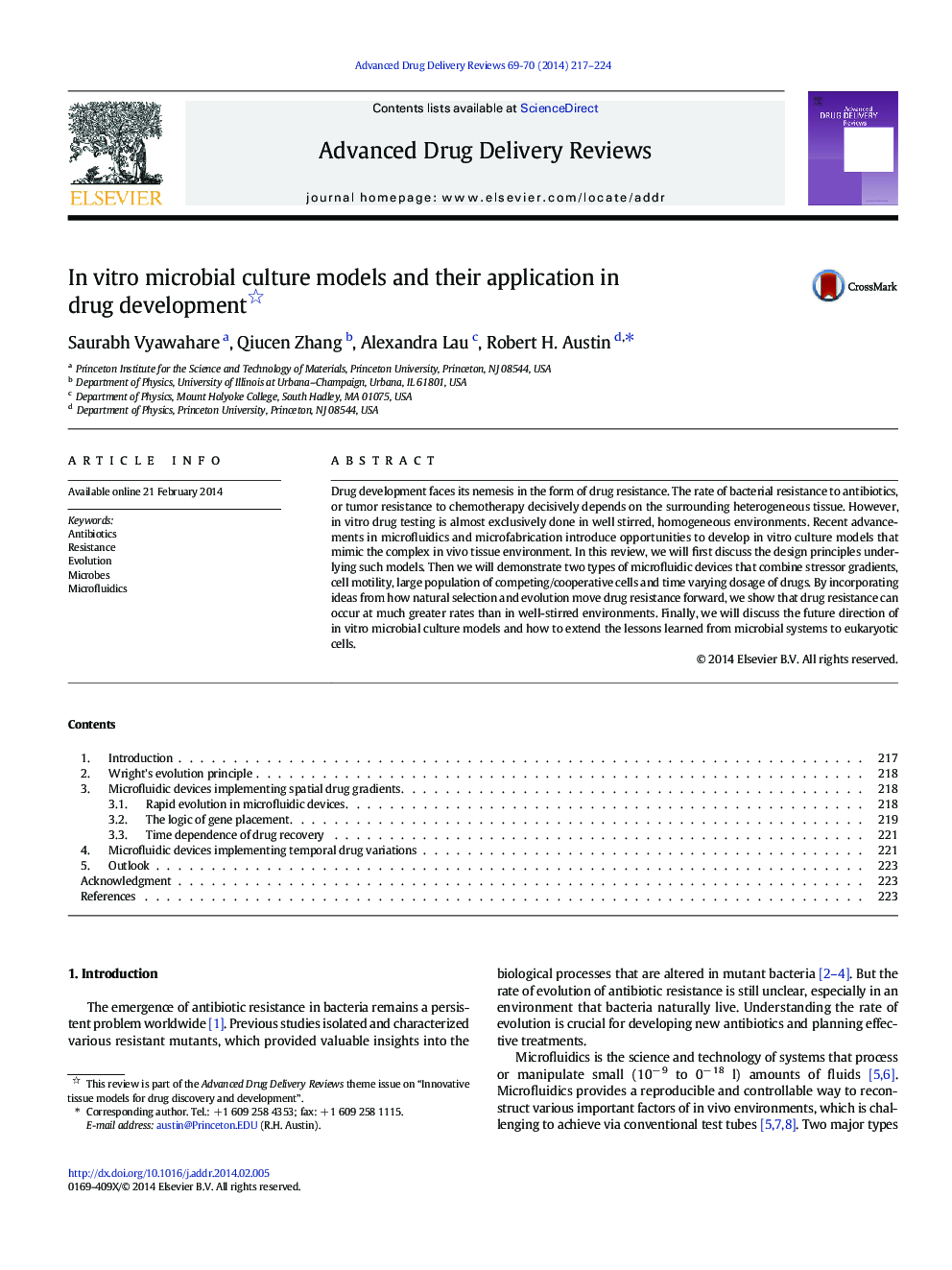| Article ID | Journal | Published Year | Pages | File Type |
|---|---|---|---|---|
| 2070864 | Advanced Drug Delivery Reviews | 2014 | 8 Pages |
Drug development faces its nemesis in the form of drug resistance. The rate of bacterial resistance to antibiotics, or tumor resistance to chemotherapy decisively depends on the surrounding heterogeneous tissue. However, in vitro drug testing is almost exclusively done in well stirred, homogeneous environments. Recent advancements in microfluidics and microfabrication introduce opportunities to develop in vitro culture models that mimic the complex in vivo tissue environment. In this review, we will first discuss the design principles underlying such models. Then we will demonstrate two types of microfluidic devices that combine stressor gradients, cell motility, large population of competing/cooperative cells and time varying dosage of drugs. By incorporating ideas from how natural selection and evolution move drug resistance forward, we show that drug resistance can occur at much greater rates than in well-stirred environments. Finally, we will discuss the future direction of in vitro microbial culture models and how to extend the lessons learned from microbial systems to eukaryotic cells.
Graphical abstractFigure optionsDownload full-size imageDownload high-quality image (236 K)Download as PowerPoint slide
